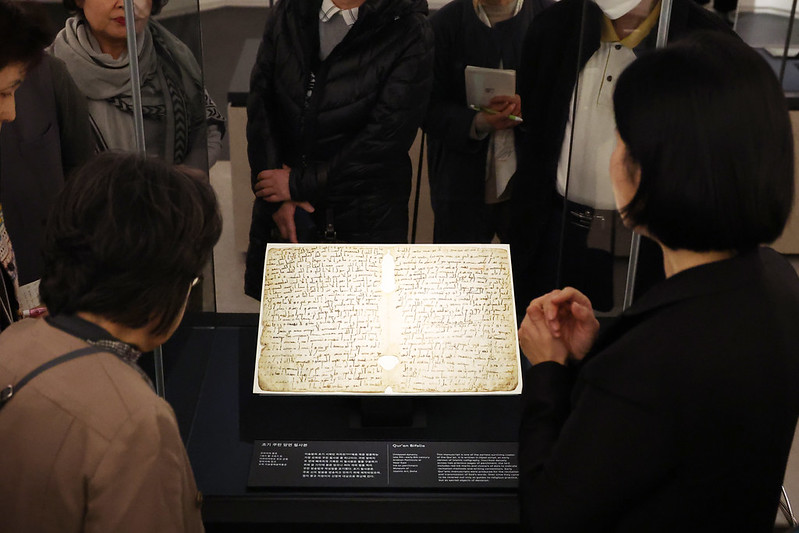
The National Museum of Korea on Nov. 22 launched its permanent exhibition section Islamic Art Gallery showing leading works such as early manuscripts of the Quran, royal carpets, ceramics and jade artifacts.
By Margareth Theresia
Photos = Lee Jeongwoo
An exhibition of impressive Islamic art in Seoul features intricate early manuscripts of the Quran to lavish royal carpets, ceramics and delicate jade crafts.
The National Museum of Korea on Nov. 22 opened its Islamic Art Gallery as a permanent exhibition hall jointly with the Museum of Islamic Art (MIA) in Doha, Qatar.
Held under the theme " Islamic Art: A Journey of Splendor," the exhibition showcases 83 leading Islamic artworks like early manuscripts of the Quran.
Islamic culture is relatively new to Korea but the country has a long history of exchange with the Muslim world. Persian artifacts were discovered in tombs of the Silla Kingdom (57 B.C.-A.D. 935) and merchants from the Goryeo Dynasty (918-1392) traded with their Arab counterparts, spreading the country's name "Korea."
NMK Director You Hong June said, "We hope that this is an opportunity for visitors to accurately understand Islamic culture, which has flourished brilliantly across eras and regions, and reflect on the diversity of human culture and the value of coexistence."

Visitors at a media preview of the National Museum of Korea's permanent Islamic Art Gallery, which opened on Nov. 21, look at a Quran bifolio, one of the world's oldest surviving manuscripts of Islam's holy book believed to date back to the late seventh to early eighth centuries. The relic is considered an important resource for understanding the calligraphy and binding methods used before the advent of Islamic manuscript culture.
The exhibition focuses on the cultural diversity and visual spectrum of Islamic art rather than on chronological order. Its three sections featuring works from the seventh to 19th centuries are "Religious Art of Islamic World," "Embrace and Expansion of Islamic Culture," and "Islamic Courtly Culture and Manuscripts."
The first section shows the basics of Islamic art in which faith and art are closely intertwined, highlighting the essence of literary art through early manuscripts of the Quran and large-scale editions of the holy book of the Timurid Dynasty (1370-1507).
The second section shows the aesthetic fusion created by Islamic culture, which originated from the Arabian Peninsula and developed through contact with a range of regions. The advanced techniques and delicate sculptural beauty of artisans in glass, ceramics and metalwork stand out.
The final section explores courtly arts and academic traditions that flourished in the Ottoman (1299-1922), Safavid (1501-1736) and Mughal (1526-1857) empires. Fancy carpets, textiles and intricate ornaments show the authority, decorative beauty and aesthetic sophistication pursued by each empire.
"Based on religious foundation, Islamic civilization expanded to Europe, Africa and Asia," MIA Director Shaika Nasser Al-Nassr said. "It accepted technologies and culture from various regions while developing distinctive aesthetics and artistic traditions."
The exhibition runs through Oct. 11 next year.

A visitor on Nov. 21 sits at a resting space in the National Museum of Korea's new permanent exhibition hall Islamic Gallery. The section is a media art that reinterprets the Damascus Room, a leading space at the Museum of Islamic Art in Doha, Qatar, and the lifestyle and spatial aesthetics of the aristocrats from the era.
margareth@korea.kr